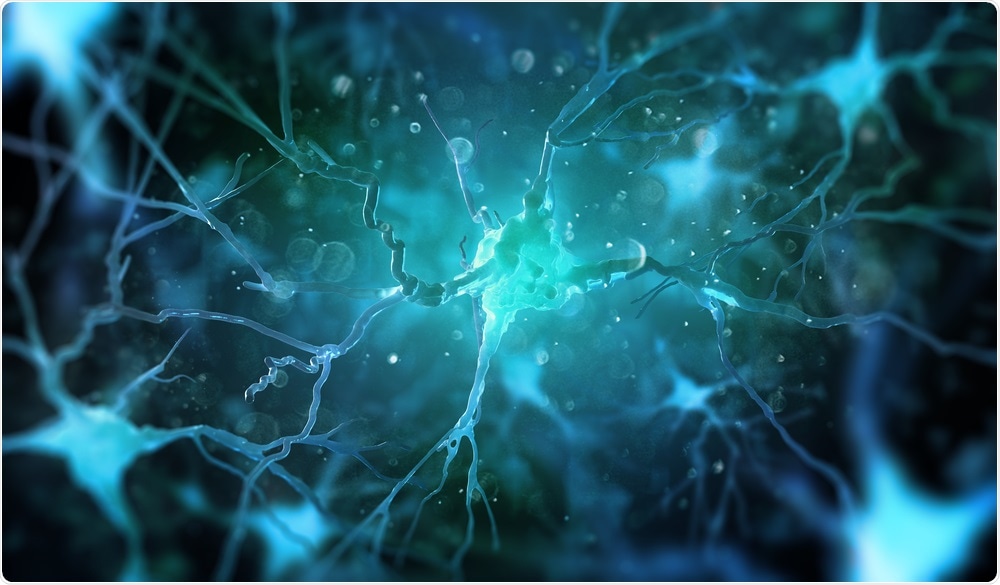Researchers Benjamin Arenkiel, Gary Liu and colleagues from Baylor College of Medicine, the Jan and Dan Duncan Neurological Research Institute at Texas Children's Hospital and Rice University recently looked deep into the brain to understand the relationships between the neural synapses and the functions of inhibitory interneurons for two types of cells (tufted cells and mitral cells). For the study, they used the mice olfactory bulb nerves to study the functioning of these types of cells.
The study, titled, “Target specific functions of EPL interneurons in olfactory circuits,” was published in the latest issue of the journal Nature Communications.
 Andrii Vodolazhskyi | Shutterstock
Andrii Vodolazhskyi | Shutterstock
The team used optogenetic mapping techniques and live 2-photon imaging and computational modeling. The aim was to answer the following question, “To what extent do interneuron subtypes exert distinct effects on their multiple excitatory targets, and if the inhibitory output from one interneuron subtype is removed, are its multiple targets homogenously influenced, or differentially affected?”
The researchers removed the inhibitory interneurons in the experimental brain tissue. These inhibitory interneurons have a complex role in inhibiting as well as transmitting signals across inhibitory as well as excitatory neurons.
When these inhibitory interneurons were removed, the team found that their inhibitory effects on the tufted cells and mitral cells were changed. These cells are normally responsive to smells or odours in the olfactory bulbs of animals. The tufted cells were more affected than the mitral cells by the removal of the interneurons found the study.
The team wrote that they “selectively remove GABAergic transmission from a subset of olfactory bulb interneurons, EPL interneurons (EPL-INs).” They then tested the mice for responses to odours.
The authors explained that there is an “external plexiform layer (EPL)” of the olfactory bulb. They explain, “EPL-INs are fast-spiking axon-less cells that connect extensively with MCs and TCs (mitral cells and tufted cells)”.
EPL-Ins are found more abundantly in the tufted cells and mitral cells compared to the granular cells. They noted that each of the EPL-INs can connect with over 1000 tufted and mitral cells.
The researchers looked at three properties of the inhibition of the EPL-IN – “(1) establishing and maintaining OB anatomical circuit architecture, (2) synaptic connectivity of EPL-IN to TCs/MCs, and (3) effects on TC vs MC response properties.” For this they used both in vitro and in vivo techniques, wrote the authors.
Uncovering odor perception
Results showed that “Olfactory bulb architecture is preserved in EPL-IN” removed animals. Compared to control animals, there was no alteration in the architecture of the genetically modified animals with removal of EPL-IN. The mice were used in a head fixed condition.
They were given to smell a panel of 36 smells and the activity of their tufted and mitral cells in the olfactory bulb was recorded as a response to the smells. Compared to control animals, those with EPL-IN inhibition showed a greater response of the tufted and mitral cells to the panel of smells wrote the researchers.
This study lays the foundation for the understanding of the complex interplay of neurons in the brain and also gives an insight into the different functions of the cells and how they process the different sensory inputs presented to them.
The authors concluded:
Our data suggest that olfactory bulb interneurons, through exerting distinct inhibitory functions onto their different synaptic partners, play a significant role in the processing of odor information.”
Losing your sense of smell was recently linked to Alzheimer’s disease
Researchers led by Weiyun Li from Institute of Neuroscience and Anatomy, School of Medicine, Zhejiang University, and Department of Clinical Medicine, Zhejiang University City College, Hangzhou, China recently (January 2019) published their study titled, “Impairment of Dendrodendritic Inhibition in the Olfactory Bulb of APP/PS1 Mice,” in the journal Frontiers in Aging Neuroscience.
This team explained that impairment in the sense of smell is often the first symptom of Alzheimer’s disease but the exact neuronal mechanisms that affect the Of are not clearly known.
The researchers wrote, “Granule cells (GCs) in the OB regulate the activity of mitral cells (MCs) through reciprocal dendrodendritic synapses.” These dendrodendritic connections or interneurons are necessary for the processing of the smell signals and also for discriminating between two smells.
They used specific mice models called the “amyloid precursor protein (APP)/PS1 mice” to study the effects of inhibitions of these dendrodendritic synapses. In these mice, there were deposits of amyloid proteins in the olfactory bulbs that led to impairment of the sense of smell they noted.
The researchers concluded that interplay of neurons and abnormal protein deposits in this region could be a potential new focus for studying and understanding the progression of AD.
Journal references:
Liu, G., et al. (2019). Target specific functions of EPL interneurons in olfactory circuits. Nature Communications. https://www.nature.com/articles/s41467-019-11354-y
Li, W., et al. (2019). Impairment of Dendrodendritic Inhibition in the Olfactory Bulb of APP/PS1 Mice. Fronties in Aging Neuroscience. https://www.ncbi.nlm.nih.gov/pmc/articles/PMC6357935/